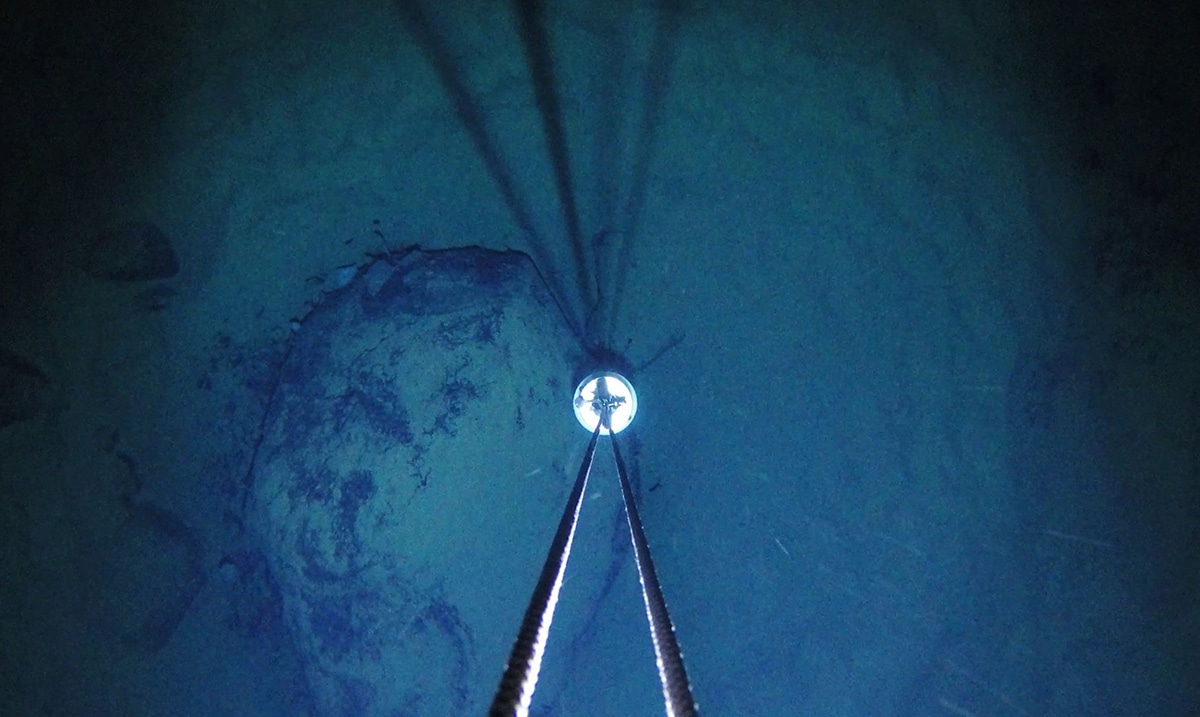We know that mind-blowing things are found all over the world, but this interesting find is one that has many questions coming forth. While we do not entirely know what lies beneath the shelves of ice in places like Antarctica, this was not necessarily like anything we’d expected.
A study that was published recently seems to go over quite the find. It was posted under the title ‘Breaking All The Rules: The First Recorded Hard Substrate Sessile Benthic Community Far Beneath an Antarctic Ice Shelf’ and it’s quite amazing. It was published on the 15th of this month and well, ever since it’s been making headlines with good reason.
Basically during this research scientists drilled through an ice shelf to sample the sediment beneath it. However, what they found was something that most would never imagine. The animals noted were quite present but definitely shouldn’t have been there. It took around 20 hours as is to even pierce through this ice shelf and so, the task at hand was quite a tedious one, to say the least.
The results of this study were posted as follows going over what exactly was found:
The boulder below FSW2 is located at a depth of 1,233 m and approximately 260 km from the modern calving margin of FIS (measured as a straight line through water). However, this is in the opposite direction of the main flow of HSSW (Nicholls, 2004). Following the two main sources of HSSW would put the boulder at > 1500 km from FIS front (following HSSW from the Ronne Depression) or > 625 km from Ronnie Ice Shelf front (following HSSW formed over Berkner Bank) (Figure 2).
The boulder itself is approximately 96 cm long by 69 cm wide and around 75 cm high. Fauna is largely concentrated on the sides of the boulder (Figure 3). The upper surface of the boulder seems to have a patchy coating of sediment of a similar color to the surrounding substrate The surrounding sediments show ripples formed by currents but there is no visible evidence of infauna or mobile epifauna.
The fauna associated with the boulder can be categorized into three main types of suspension feeders: a stalked sponge, non-stalked sponges, and unidentifiable stalked taxa (possible sponges, ascidians, hydroids, barnacles, cnidarian, or polychetes). It is also possible that the stalked sponge and/or stalked taxa might be carnivorous sponges, similar to Cladorhizidae. Only one confirmed stalked sponge (Figure 3E) was observed at a length of approximately 8.9 cm; 15 non-stalked sponges were observed around the edges of the boulder, the largest of which was 6.64 cm wide by 4 cm tall. Unidentifiable stalked taxa were the most numerous group, accounting for 58% of all observed individuals (22 individuals), the longest of which was estimated to be ∼6.6 cm long (Table 2). Figure 3B shows evidence of filamentous organisms of around 1 cm in length which could not be identified further but are possibly bacterial mats or hydroids. The upper surface of the boulder (Figure 3F) may also have a covering of filamentous organisms coated by the sediment layer but none of the images available had high enough resolution to investigate this.
The fauna associated with the boulder can be categorized into three main types of suspension feeders: a stalked sponge, non-stalked sponges, and unidentifiable stalked taxa (possible sponges, ascidians, hydroids, barnacles, cnidarian, or polychetes). It is also possible that the stalked sponge and/or stalked taxa might be carnivorous sponges, similar to Cladorhizidae. Only one confirmed stalked sponge (Figure 3E) was observed at a length of approximately 8.9 cm; 15 non-stalked sponges were observed around the edges of the boulder, the largest of which was 6.64 cm wide by 4 cm tall. Unidentifiable stalked taxa were the most numerous group, accounting for 58% of all observed individuals (22 individuals), the longest of which was estimated to be ∼6.6 cm long (Table 2). Figure 3B shows evidence of filamentous organisms of around 1 cm in length which could not be identified further but are possibly bacterial mats or hydroids. The upper surface of the boulder (Figure 3F) may also have a covering of filamentous organisms coated by the sediment layer but none of the images available had high enough resolution to investigate this.
I know, that might not sound like much to some but for many of us it really gets our minds turning. These creatures are living in complete darkness and because the conditions they’re existing in overall are quite special, they are all the more interesting. They do not live under any kind of bustling water column or anything of the sort, they are literally under about half of a mile of solid ice and unable to really go out and look for food. More research needs to be done to truly understand how these creatures are continuing to thrive as they are.

